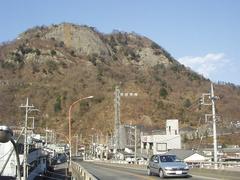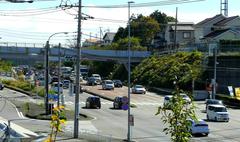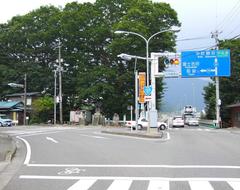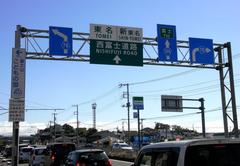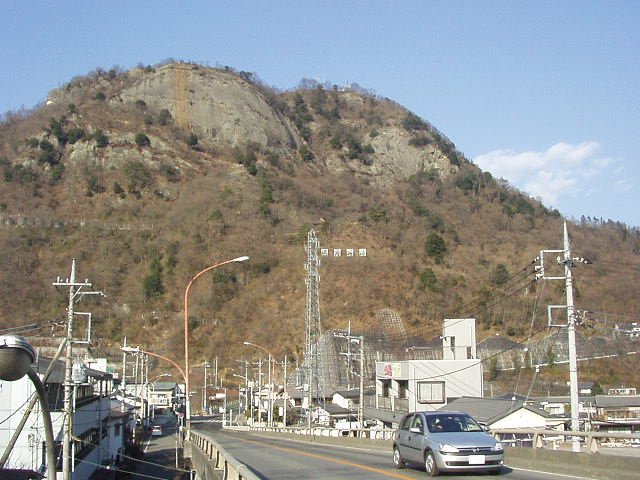
Japan National Route 139 Visiting Guide: Hours, Tickets, and Nearby Attractions
Date: 14/06/2025
Introduction
Japan’s National Route 139 is more than just a highway—it’s a corridor through some of the country’s most celebrated landscapes, connecting the industrial city of Fuji in Shizuoka Prefecture with the natural beauty of Okutama in Tokyo. Stretching 134.4 kilometers (83.5 miles), Route 139 passes through the iconic Mount Fuji region, the tranquil Fuji Five Lakes, the mysterious Aokigahara forest, and the lush frontiers of western Tokyo (Wikipedia). For travelers, Route 139 offers a blend of natural wonders, cultural landmarks, and outdoor experiences, all accessible via modern, toll-free infrastructure.
Originally constructed as part of Japan’s post-war infrastructure boom, Route 139 was designed to link key industrial, natural, and urban regions. The highway has evolved over time, with former toll sections like the Nishi Fuji Road and Fujinomiya Road becoming toll-free in 2012 to encourage domestic tourism and environmentally responsible travel (Alo Japan).
Along this route, travelers encounter a mosaic of attractions—ranging from the serene Asagiri Plateau to the spiritual Fujisan Hongu Sengen Taisha Shrine, and from the thrill of Fuji-Q Highland amusement park to the hiking trails of Okutama. Each season offers unique highlights: cherry blossoms in spring, vivid foliage in autumn, and clear mountain vistas in winter. Route 139 is accessible by car (with an International Driving Permit required for foreign drivers) and by public transport, with comprehensive bilingual signage and frequent rest stops (Never Ending Voyage).
This guide provides essential details on visiting hours, ticketing, travel tips, and cultural insights for Route 139 and its surrounding attractions, equipping you for an unforgettable journey through Japan’s natural and cultural heartland.
Table of Contents
- Historical Overview of Route 139
- Key Attractions and Visiting Hours
- Travel Tips and Accessibility
- Economic and Cultural Impact
- Infrastructure and Future Developments
- Detailed Guide: Visiting Okunitama Shrine
- Scenic Highlights & Natural Wonders
- Cultural & Historical Sites
- Outdoor Activities & Adventure
- Notable Towns and Seasonal Events
- Visitor FAQs
- Mount Takao: Visitor Guide and Transportation
- Summary & Final Planning Tips
- References
Historical Overview of National Route 139
National Route 139 was established as part of Japan’s post-war efforts to strengthen regional connectivity. Its unique semi-circular path around Mount Fuji was carefully engineered to provide access to natural and cultural sites while minimizing environmental disruption. The route’s transition to toll-free status in 2012, with the removal of fees on the Nishi Fuji and Fujinomiya Roads, underscores Japan’s dedication to accessible and sustainable tourism (Alo Japan).
Key Attractions and Visiting Hours
Mount Fuji and Surrounding Sites
Route 139 provides direct access to some of Japan’s most celebrated natural destinations:
- Fuji Five Lakes: Open year-round, visitor centers typically operate 9:00 AM–5:00 PM.
- Aokigahara Forest: Accessible daily; recommended visits during daylight for safety.
- Asagiri Plateau: Best visited in daylight, open access.
Okutama, Tokyo
The Tokyo terminus of Route 139, Okutama, is a gateway for outdoor enthusiasts. Hiking trails, hot springs, and Lake Okutama are highlights. Visitor centers and museums generally open 9:00 AM–4:30 PM (Go Tokyo).
Travel Tips and Accessibility
- Tolls: Entirely toll-free since 2012.
- Public Transport: Buses and trains connect key towns, but renting a car offers more flexibility.
- Driving Requirements: Foreign drivers need an International Driving Permit (IDP) (Never Ending Voyage).
- Seasonal Cautions: Spring and autumn are ideal; winter driving requires care due to snow and ice.
- Safety: Drive on the left, be alert on mountain roads, and check weather updates before traveling.
Economic and Cultural Impact
Route 139 is vital for tourism, agriculture, and forestry. The Asagiri Plateau’s dairy farms and local food producers rely on the route for distribution, while the area’s inns, restaurants, and seasonal festivals draw visitors year-round (Japan Travel).
Infrastructure and Future Developments
Modern road surfaces, bilingual signage, and frequent rest stops ensure a smooth journey. Plans for a light rail transit system near Mount Fuji aim to ease congestion and further support sustainable tourism (News on Japan).
Detailed Guide: Visiting Okunitama Shrine in Fuchu, Tokyo
Overview
- History: Over 1,800 years old, central to the ancient Musashi Province.
- Opening Hours: 6:00 AM–5:00 PM (extended for festivals).
- Admission: Free; special events or guided tours may require tickets.
- Access: A 10-minute walk from Fuchu Station (JR Nambu/Keio Line).
- Nearby: Fuchu’s Edo-period sites, Route 139 access, Showa Kinen Park.
- Accessibility: Wheelchair-friendly with accessible facilities.
Scenic Highlights & Natural Wonders
Mount Fuji & Fuji Five Lakes
Route 139 skirts Mount Fuji’s western and northern flanks, providing unmatched views and access to:
- Lake Kawaguchi: Best for cherry blossoms (late March–early April) and autumn foliage (October–November).
- Activities: Hiking, cycling, and boating available; most lakeside areas are free year-round.
Aokigahara Forest (Sea of Trees)
A mysterious lava forest at Mount Fuji’s base, famous for tranquil trails and unique caves:
- Fugaku Wind & Narusawa Ice Caves: Open 9:00 AM–5:00 PM, with admission (350–500 yen).
Shiraito & Otodome Falls
Near Fujinomiya, Shiraito Falls is a UNESCO World Heritage Site; Otodome Falls offers a contrasting, powerful cascade.
- Access: Year-round during daylight.
- Admission: Shiraito Falls charges a small fee (~300 yen).
Cultural & Historical Sites
- Fujisan Hongu Sengen Taisha Shrine: The spiritual heart of Mount Fuji worship. Open 8:00 AM–5:00 PM, free entry.
- Oshino Hakkai: Picturesque village with eight clear ponds; open daily, free to explore.
- Fuji-Q Highland: Thrill rides and anime-themed attractions; open 9:00 AM–5:00 PM, admission varies.
Unique Experiences & Local Flavors
- Fujisan World Heritage Center: Interactive exhibits on Mount Fuji; 9:00 AM–5:00 PM (closed Wednesdays), ~300 yen admission.
- Fujinomiya Yakisoba: Local specialty available throughout the region.
- Saiko Iyashi no Sato Nenba: Open-air folk village; 9:00 AM–5:00 PM (closed Tuesdays), ~500 yen admission.
Outdoor Activities & Adventure
- Mount Fuji Climbing: Fujinomiya and Subashiri trails accessible from Route 139. Climbing season: early July–early September. Voluntary climbing fee: ~1,000 yen.
- Cycling & Drives: Scenic routes between Fujiyoshida and Fujinomiya.
- Camping & Hot Springs: Reserve ahead, especially in peak seasons.
Notable Towns and Seasonal Events
- Fujiyoshida: Gateway to Mount Fuji; home to Chureito Pagoda and the Yoshida Fire Festival (August).
- Narusawa: Known for lava caves and flower parks.
- Fujinomiya: Southern terminus with vibrant markets and festivals.
Seasonal Highlights:
- Cherry Blossoms: March–April
- Autumn Foliage: October–November
- Festivals: Fujisan Hongu Sengen Taisha Spring Festival, Yoshida Fire Festival.
Visitor FAQs
Q: Are there tolls on Route 139?
A: No; all tolls were abolished by 2012.
Q: How can I access Route 139 by public transport?
A: Buses and trains connect major towns; a car provides the most flexibility.
Q: What are the typical visiting hours for attractions?
A: Most sites open 8:00 AM–5:00 PM; check seasonal variations.
Q: Is Route 139 suitable for foreign drivers?
A: Yes, with an International Driving Permit and valid home license.
Q: When is the best time to visit?
A: Spring for cherry blossoms; autumn for foliage.
Exploring Mount Takao: Visitor Guide
Overview
Mount Takao, an hour from central Tokyo, is a favorite for hikers and nature lovers. It combines spiritual history with accessible hiking and panoramic views (Mount Takao Official Website).
- History: Home to Yakuoin Temple (8th century), a center of mountain worship.
- Access: Keio Takao Line to Takaosanguchi Station; JR Chuo Line to Takao Station.
- Trails: Main Trail (3.8 km, ~90 minutes); alternative routes for varied experiences.
- Hours: Trails and temple open year-round; cable car/chair lift 9:00 AM–5:30 PM.
- Tickets: Cable car ~490 yen one-way; hiking is free.
- Best Seasons: Cherry blossoms (April), autumn foliage (late October–December).
- Events: Fire-Walking Ceremony (March), annual festivals.
Practical Visitor Tips
- Transportation: Route 139 is best explored by car but is accessible by bus and train.
- Accommodations: Options from luxury ryokan to campgrounds—reserve early in peak seasons.
- Weather: Mild summers; winters may bring snow/ice.
- Language: English signage is common, but rural areas may have limited English support.
- Etiquette: Respect local customs, especially at shrines and onsen.
Visual Media
Alt text: Mount Fuji view from Route 139
Alt text: Route 139 scenic drive along Asagiri Plateau
Alt text: Main gate of Okunitama Shrine in Fuchu, Tokyo
Alt text: Annual Fuchu Reitaisai Festival at Okunitama Shrine
Related & Internal Links
Summary & Final Planning Tips
National Route 139 offers a gateway to some of Japan’s most prized destinations—combining dramatic landscapes, revered shrines, and vibrant towns. The toll-free highway, with its modern amenities and seasonal attractions, is ideal for travelers seeking both adventure and cultural immersion (Wikipedia; Go Tokyo). Plan your journey with attention to seasonal events, driving requirements, and the diverse experiences available—from Mount Fuji’s slopes to the spiritual grounds of Okunitama Shrine.
Stay updated with official tourism sites, download the Audiala app for real-time info, and follow travel blogs and social media for inspiration. Whether you’re driving, hiking, or exploring local cuisine, Route 139 promises an enriching and memorable adventure through Japan’s heartland.
References
- Alo Japan: Driving National Route 139
- Japan National Route 139 - Wikipedia
- Go Tokyo – Attractions
- Never Ending Voyage – Planning a Trip to Japan
- News on Japan – Sustainable Tourism Developments
- Japan Travel Official Site
- Mount Takao Official Website
